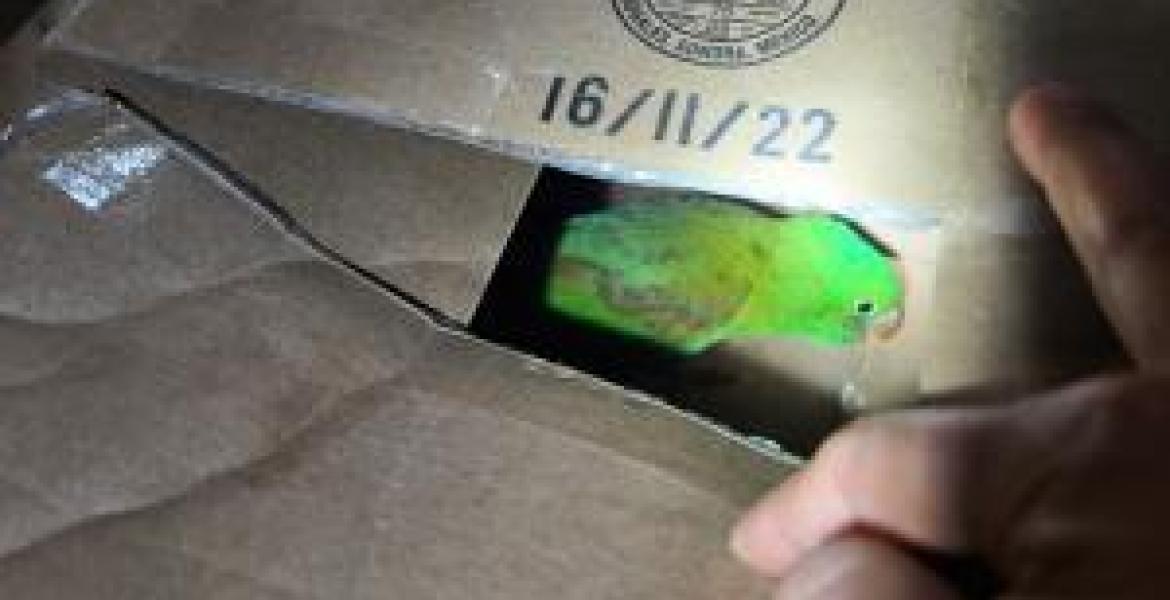A small white house sat back from the street in the 1000 block of Culberson, green lawn cut through the center by a narrow path leading to the porch and lined with flowers and leafy plants.
It was summertime, July 11, 1986, and from the exterior everything appeared to be in order. Knocking on the front door just before 9:30 a.m., an adult woman waited before the house for her aunt to answer, but there came no reply. Nor would there.
“She knocked and knocked and she (the aunt) wouldn’t answer the front door, which was unusual,” SAPD Detective Jim Coleman said. “So she went around—there was another door and it was already partially open. It looked like somebody had forced it open. She walked in and found her laying in the living room.”
Dovie Dykes, 83, lived alone in the quaint little house, and was regularly seen by neighbors as she went to check her mail or pay her rent at the landlord’s house up the street. Her niece came to visit her two to three times a week, and aside from that, she pretty much kept to herself. Everyone knew she had a small dog, and some reported hearing it barking late the night before, but no one thought anything of it. Dogs bark.
“A couple of the neighbors heard the dog barking that night, late at night…I’m sure that’s when the entrance was made into the house,” Coleman said. “But you know, you hear a dog barking and don’t think a thing about it unless you hear somebody screaming or whatever. You just don’t know. Then you come back later, and go, ‘wow, geez, that’s what that was’. Nobody knew.”
When San Angelo police officers Hill and Torres arrived on scene, they found the 83-year-old woman lying in her living room deceased, with injuries that indicated there had been a struggle. She hadn’t been dead for long, examiners ascertained, and it was clear she had been sexually assaulted before she died.
“There would be no doubt [of foul play] when you saw what she was like,” Criminal Investigations Division Lieutenant David Howard said. “No question. No question she’d been assaulted, no question she’d been murdered.”
As the investigation continued, SAPD Detectives Cornelius and Alwine were called to the scene, where they confirmed that the perpetrator had indeed forced entry on the east side of the house.
They began bagging evidence and took several samples of DNA found both in the living room and on the victim. Back in those days, DNA was not widely used for evidentiary purposes, Coleman explained, noting technological limitations.
“For the most part, crime scene people would go there and photograph or try to get fingerprints, and of course, anything around,” he said. “They would collect that and save it as evidence. Later on, you go back and you start looking at cases and you say, ‘…I wonder if we can send it off and get touch evidence looked at.’’
DNA gathered at the scene in 1986 is currently at a lab for testing, Coleman said; a practice implemented in cold cases nationwide that has led to major developments which in some cases lead to convictions.
The DNA profile is loaded into a database and checked against samples from those on file, and if there is no match, is held in the hopes that some day someone will enter the system and provide a positive ID.
The Dovie Dykes rape and homicide was worked vigorously for several months, and several suspects were interviewed, but nothing turned up. Neighbors and acquaintances reported neither seeing or hearing anything that would give clues to the murder, and the PD’s prime suspect turned out to be incarcerated elsewhere at the time of incident.
Despite being worked for months and with the assistance of other law enforcement agencies, the case went cold and has remained in hibernation since. Still, it remains one that troubles detectives, not only because the case is unsolved, but due to the violence and the innocence of the victim.
“Just to think: here you are, 83 years old, all by yourself, take care of your home all by yourself, you and your little dog, and your last breath is while you’re being beaten and sexually assaulted,” Coleman said. “That’s when you take your last breath. None of these crimes are good, but when you get something like that, it’s just—it’s, it’s tough.”
After Dykes’ murder, detectives Alwine and Cornielus returned to the scene to continue to gather evidence for the next couple of days. On July 14, three days after the murder, the detectives were in the house when the phone rang.
The person on the phone identified himself as an officer with animal control, and reported the Dykes’ dog had been found dead at the intersection of Bell and Culberson on the day of the murder. Dykes was estimated to have died sometime around midnight on July 11, and her dog was killed just a few hours later. Coleman suggests the dog may have gotten out when the murderer made entry to the home. Her purse was also missing from the house and has never been recovered.
An autopsy following the discovery of Dykes’ body revealed that she had died during the sexual assault of cardiac arrhythmia. At just 5’4” tall and in her mid-80s, she was able to put up a fight, but likely not for very long, detectives suppose.
Police were not able to create a profile for the killer or deduce any information about his or her stature based on the injuries and interviews with neighbors.
“Sometimes those things are good, sometimes they’re not,” Coleman said. “If you have a series of crimes…those things might help for the most part, but those profiling things don’t work like they do on TV.”
Howard and Coleman agreed that although a profile couldn’t be established, the age of the woman and the violence of the crime might provide clues to the psychological make-up of the aggressor, but it didn’t provide much.
“It tells you about something in their background, probably,” Howard said contemplatively. “I think that it would indicate something in that person’s background as to why they picked that type of person, if that makes sense. There’s some type of trigger in there. Sometimes they’re looking for an easy target. There’s a broad range of victims, but they’re just looking for an easy target.”
“They could be young, they could be old, but like he said, if something’s a little easy…” Coleman elaborated. “Obviously, the had to fight a little with this one, but I’m sure it wasn’t a very long fight.”
Over the years, the Texas Rangers and the SAPD have looked back into the case in search of answers under a fresh set of eyes. Appeals to the public for information haven’t turned up any ground-breaking leads, but the case remains open and of interest.
“If there’s anyone who saw something, don’t try to decide if it’s something that you need to report or not,” Coleman said. “If you saw something, if you’ve heard something since then, just let us be the judges of good information-bad information. Just let us know.”
If you or anyone you know has information pertaining to the murder of Dovie Dykes, contact Crime Stoppers at 325-658-HELP. Tips may also be submitted online at sanangelocrimestoppers.com, or via the SAPD website under cold case investigations.
More cold case stories may be found below:
Subscribe to the LIVE! Daily
Required






Comments
Listed By: serenity at last
- Log in or register to post comments
PermalinkListed By: Chelsea Reinhard
"A small white house sits nestled between trees on Vermont Ave." Present simple tense: used to express general facts, habits or routines.
Personification: giving human characteristics to something nonhuman.
"A small white house sat nestled between trees on Vermont Ave. in 1986." Past simple tense: used to express completed past action.
- Log in or register to post comments
PermalinkListed By: David Jacobs
- Log in or register to post comments
PermalinkListed By: David Blumentritt
- Log in or register to post comments
PermalinkListed By: Blasita Verbena
- Log in or register to post comments
PermalinkPost a comment to this article here: